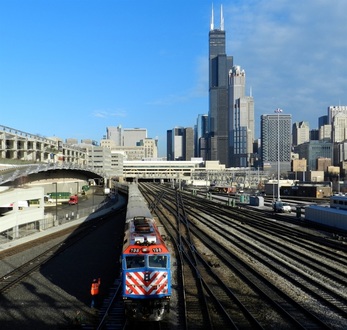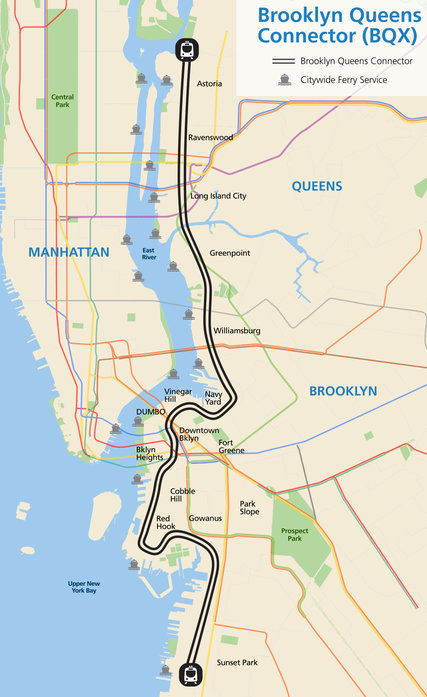|
At a recent Urban Land Institute conference, the head of global developer Tishman Speyer shared his thoughts on where value is being created in the modern real estate market: The time may be coming when transportation has a greater effect on real estate than interest rates - Rob Speyer, President and CEO, Tishman Speyer
It's nice to see an outspoken industry leader speak so highly of buses! Full disclosure, I'm a longtime member of ULI's Transit-Oriented Development product council and we speak highly of transit quite often.
0 Comments
If you can build a $6B Australian subway project, you'll win the right to build some downtown towers and make a few bucks. So goes the transit value capture logic of a recent tender for a Melbourne Metro project according to The Age.
At this time, the city's central loop, where a half-dozen lines coalesce (think about it like the Chicago loop, but underground), is a major transit service bottleneck. The Metro Tunnel project promises to provide an alternate route for some of the lines to pass through the central city. With only five stations, two of which are essentially expansions of existing stations, the project's main impact on regionally accessibility will be increased throughput on the existing suburban lines. All this could mean higher frequencies to the suburbs and marginal overall connectivity increases in the CBD. Based on urban economic fundamentals and U.S. empirical experience, this investment could lead to suburbanization of some land uses, like housing, and further clustering of land uses that benefit from agglomeration, like office, entertainment, and retail. Thus, one might expect that those valuable development sites offered as part of this tender will eventually be developed as high-rise office towers, perhaps with a smattering of retail and entertainment uses at the bottom and top. Notably, this is a little different from how it's usually done in the U.S. context. Typically, you'd see a project like this put out to bid without the land development rights. Contractors would compete to build the tunnel and that's all. A few years after all the construction equipment was carted away and internal transit agency politics coalesced, the agency would get around to putting out an RFP for development on the "remnant" sites it owned in the CBD. We call this particular transit value capture mechanism joint development. On the other hand, there's an implicit assumption in the Australian mode of thinking that the tunnel builder will value the future development rights in the near term at a magnitude that is preferable for the transit agency to retaining temporary control of the sites and selling the development rights to a specialized real estate developer at a future date. It's an interesting comparison in approaches to a very similar value capture strategy. By the way, you have until 2:00PM on June 9th to respond to this solicitation. When timing your trip to your local FedEX office, keep in mind that Australia is a day ahead of the U.S.!  Flickr user John W. Iwanski (CC) Flickr user John W. Iwanski (CC) News is bouncing around the interwebs that there may be a new transit value capture mechanism enabled in Illinois. Well, it's not exactly new for Chicago to establish TIFs! TIF districts are a common tool and much maligned in Chicago. This time, the TIFs will be transit specific. The Chicago-focused Metropolitan Planning Council is lobbying for SB277, a bill in the Illinois General Assembly. As they explain it, the bill would allow the City of Chicago to justify the establishment of a TIF district specifically because it's near transit. The accumulated incremental tax revenues would help fund transit capital improvements in the districts. Let's see how it plays out! Jarrett Walker produced yet another compelling post on the transit investment planning process that is well worth a read. He muses about what level of sophistication plans should achieve at various points in the planning process and it led me to think about what level of sophistication value capture plans should be at various stages of the transit planning process. It’s easy for a journalist to say that a plan is short on specifics, but all plans are short on specifics. If included every detail, you’d have construction drawings, escrow arrangements, employee work shifts, and so on. But that’s a lot of work, so you don’t do it until you’re sure you want to proceed. Jarrett uses New York's recently announced BQX project to illustrate his points (see route diagram above). He notes that there are plenty of questions that still remain regarding fares, frequencies, connections, reliability, and other important transit matters. However, the plan is being put forward at this level of completion to see if it has legs and if it can go forward. The mayor is seeking fellow backers and gathering the support the project will need to proceed and flourish. According to Jarrett, now is not the time to spend millions on design. Further, as Walker argues, putting out too much information too early suggests a level of specificity that doesn't yet exist. And, perhaps, the specificity shouldn't exist for a freshly announced publicly funded project. Too many specifics is cause for great concern on the part of citizens and advocates who may perceive that they were inadequately consulted. In the case of BQX, I expect that the plan is being presented in a napkin sketch format partly to illustrate the amount of fine tuning and dialogue still to take place (those curves on the illustrative map don't correlate to exact rights of way). The project is conceived thoroughly enough to be thrown against the wall without morphing into something completely different and De Blasio can now see if the idea sticks. In fact, we now know that a diverse HDR team spent approximately five weeks to develop high level plans for the project before it was announced. It shouldn't surprise anyone that there are factors still under consideration and that important details continue to emerge, including the number of bridges that will need to be built for the optimal alignment. As part of HDR's five week planning process, high-level value capture estimates were also developed. The mayor considered the value capture funding opportunity important enough and solid enough to include it in his introduction of the project (likely to ameliorate concerns that he'd be dipping into transit funds that had already been allocated to other projects). The expectation has now been set that some portion of the project's cost will be covered through real estate value capture. Administration officials believe the system’s cost can be offset by tax revenue siphoned from an expected rise in property values along the route. So, at this early point in the transit planning process, what level of value capture estimating should be conducted? Should there be back of the envelope estimates or should there be property level estimates of the value that might be captured? Well, you only need as much detail as is required to make an informed decision. Any more detail and you've wasted your resources.
You need to know a few things:
In the case of BQX, I have to assume that someone made sure that value capture's cost coverage potential was "substantial" or "significant" before the mayor included value capture in his announcement. Leading up to the next election cycle, De Blasio cannot afford to go back to elected officials and citizens to inform them that value capture might fund only 10% of the cost of the project and other sources will be required to pay for 90%. So, what is "substantial" or "significant" cost coverage? If you think you can get federal funding for 50% of the project, does value capture need to be all of the local match (50% of project costs)? If you cover half of the local match (25% of the total project cost), does that meet the mayor's promise that BQX would be funded through value capture? This is a political question. What cost coverage is De Blasio comfortable with given the expectation that he has set? For the mayor to achieve a minimum level of comfort, does he need detailed value capture analytics? Well, I hope not. You see, there's a analytical issue. Even if you had the most sophisticated value capture analyses produced from the outset, cost coverage calculations rely on an estimate of the cost of the project. At this stage of the planning process, the cost of the project is highly uncertain. So, you're potentially faced with estimation errors in the denominator of your critical metric. Furthermore, detailed value capture projections are likely to be wrong the further one is from implementation, so early specificity does little to actually improve your results. And the same political issues also exist for the specificity of value capture programs. Value capture inherently impacts real estate interests. Proceeding toward detailed analyses requires that you make assumptions about the value capture policies, which are factors that should be addressed with stakeholders. By making assumptions, it could appear that planners and the mayor have short circuited the political process and dictated terms - not something that works well in the U.S. political system. It would seem that a back of the envelope value capture estimate is as sophisticated as one needs if you only have a sketch transit plan. You really cannot know what the cost coverage might be until you're deeper into the planning process and closer to implementing the value capture program (which you're unlikely to do in advance of finalizing the transit plans!). I'm sure the mayor had enough evidence to support anything that was said and it was probably wise that his statements were vague about the funding situation until more robust plans can be developed and more sophisticated value capture estimates are warranted. But, it's worth noting that financing plans are a critical component of developing any transit investment. It's inefficient and ineffective to go too far down the path with transit designs if there's no way to fund them. So, as a critical part of the funding planning process, value capture estimates should probably be refined at the same pace as the project cost estimates, though a few steps behind. Why behind? For one, the transit design dictates the value capture analysis so you might as well wait until after the next iteration of transit project plans is completed before defining the value capture opportunity. Also, as previously mentioned, your estimates are more accurate the closer you get to implementation. Additionally, you might as well not waste money on sophisticated analytics if a napkin sketch will do. In the case of the BQX, it is an early transit plan that is appropriately vague and only deserves a high-level estimate of the value capture potential. I look forward to following the BQX planning process and using it as a case study. |
AuthorIan Carlton is a transportation and land use expert specializing in transit-oriented development (TOD). He helps clients - including transit agencies, planning departments, and landowners - optimize real estate development around transit. Archives
March 2019
CategoriesSpecial thanks to Burt Gregory at Mithun for permission to use the Portland Streetcar image above.
|
Photo used under Creative Commons from permanently scatterbrained

 RSS Feed
RSS Feed

